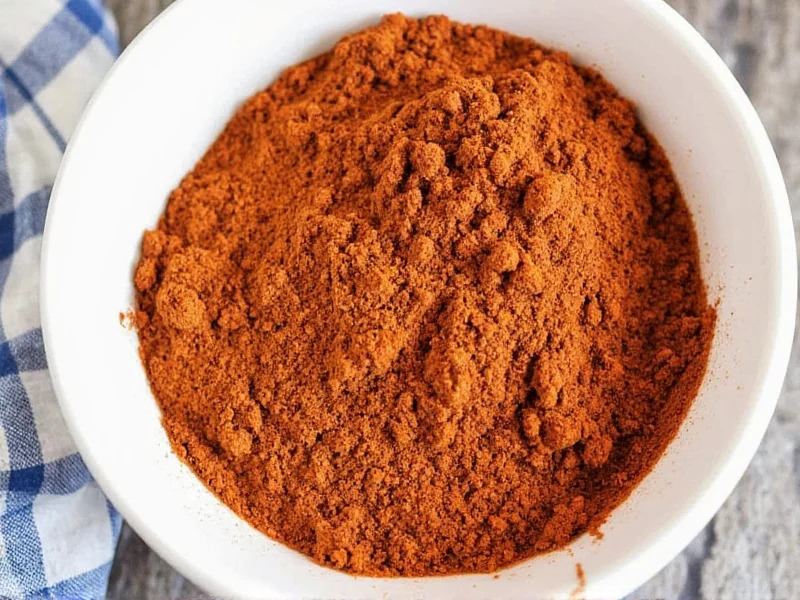If you're reaching for Cajun spice but find your container empty, don't panic. You have several excellent options to recreate that distinctive Louisiana flavor profile. Understanding what makes Cajun seasoning unique—its balance of heat, earthiness, and aromatic herbs—is key to finding the perfect substitute. This guide provides practical, tested alternatives you can make immediately with common pantry staples, whether you need a quick fix for tonight's dinner or a customized blend for dietary restrictions.
What Makes Cajun Spice Unique
Cajun seasoning originates from Louisiana's Acadiana region and features a distinctive blend of spices that creates a complex flavor profile balancing heat, earthiness, and aromatic depth. Unlike many commercial spice blends, authentic Cajun seasoning contains no cumin (that's actually characteristic of Creole seasoning). The traditional blend typically includes:
- Paprika (smoked or sweet)
- Garlic powder
- Onion powder
- Cayenne pepper (for heat)
- Black pepper
- Dried oregano and thyme
- White pepper (in some recipes)
- Salt (in most commercial blends)
The precise ratio varies by family recipe, but the hallmark is moderate heat with prominent garlic and paprika notes. When seeking a Cajun spice alternative, focus on recreating this flavor balance rather than matching ingredients exactly.
Top Cajun Spice Substitutes
Creole Seasoning: The Closest Commercial Alternative
Many people confuse Cajun and Creole seasonings, but they're distinct. Creole seasoning typically contains more herbs (like oregano and thyme) and sometimes cumin, while Cajun focuses on heat and garlic. For most recipes, Creole seasoning works as an excellent 1:1 substitute, though you may want to add extra cayenne if you prefer more heat. This makes Creole seasoning vs Cajun spice a common kitchen dilemma with a simple solution.
Homemade Cajun Spice Blend (Pantry Staples Version)
When you need a reliable homemade Cajun spice substitute, this versatile blend delivers authentic flavor using common pantry items:
| Ingredient | Amount | Flavor Contribution |
|---|---|---|
| Sweet paprika | 2 tablespoons | Earthy base, color |
| Garlic powder | 1 tablespoon | Savory depth |
| Onion powder | 1 tablespoon | Sweetness, complexity |
| Cayenne pepper | 1-2 teaspoons | Adjustable heat |
| Dried oregano | 1 teaspoon | Herbal note |
| Black pepper | 1 teaspoon | Sharp warmth |
| White pepper | ½ teaspoon | Distinctive bite |
| Salt | 1 tablespoon | Flavor enhancer |
Mix thoroughly and store in an airtight container. This how to make Cajun seasoning without cayenne alternative can be adjusted by reducing or omitting cayenne for milder versions. For smokiness without smoked paprika, add ¼ teaspoon of chipotle powder.
Diet-Specific Cajun Spice Alternatives
Salt-Free Cajun Seasoning
For those monitoring sodium intake, this salt-free Cajun spice alternative maintains full flavor without compromising health needs:
- 3 tablespoons paprika (smoked for depth)
- 1½ tablespoons garlic powder
- 1½ tablespoons onion powder
- 1 tablespoon cayenne (adjust to heat preference)
- 2 teaspoons black pepper
- 1½ teaspoons dried thyme
- 1½ teaspoons dried oregano
- 1 teaspoon celery seed (adds complexity)
This blend works particularly well for Cajun seasoning substitute for dietary restrictions while maintaining authentic flavor. The celery seed provides umami depth that compensates for the absence of salt.
Paprika-Free Alternative
If you're avoiding nightshades or simply out of paprika, this alternative uses chipotle powder as the base:
- 2 tablespoons chipotle powder
- 1½ tablespoons garlic powder
- 1½ tablespoons onion powder
- 1 tablespoon cumin
- 1 tablespoon dried oregano
- 2 teaspoons black pepper
- 1 teaspoon cayenne (optional for extra heat)
- 1 tablespoon salt
This version has a deeper, smokier profile that works exceptionally well with meats and beans. While different from traditional Cajun seasoning, it delivers comparable complexity.
Regional Spice Blends as Cajun Alternatives
Several global spice blends share flavor components with Cajun seasoning and can serve as effective substitutes:
- Old Bay seasoning: Best for seafood dishes (contains similar herbs but more celery salt)
- Adobo seasoning: Latin American blend with comparable garlic and pepper notes
- Harissa powder: North African option providing heat and depth (use half the amount)
- Fines herbs: French blend that works when combined with extra garlic and cayenne
When using these as a best store-bought Cajun spice replacement, adjust other recipe ingredients accordingly. For example, Old Bay contains significant salt, so reduce additional salt in your recipe.
Using Your Cajun Spice Alternative
Regardless of which substitute you choose, follow these tips for best results:
- Bloom spices: Heat your alternative in oil for 30 seconds before adding other ingredients to maximize flavor
- Adjust gradually: Start with 75% of the recommended amount, then taste and add more as needed
- Balance acidity: A splash of vinegar or lemon juice can help round out the flavors
- Rest time: Let dishes seasoned with your alternative sit for 15-20 minutes before serving for flavors to meld
Remember that different substitutes work better for specific applications. For gumbo or jambalaya, prioritize blends with garlic and paprika. For grilled meats, emphasize the smoky elements. When making étouffée, ensure your blend contains sufficient heat components.
Storage Tips for Homemade Blends
Properly stored, your homemade Cajun spice substitute will maintain peak flavor for 4-6 months:
- Use airtight glass containers (not plastic, which can absorb odors)
- Store in a cool, dark place away from heat sources
- Label with creation date
- Refresh blends every 6 months for optimal flavor
For extended shelf life, store in the freezer—spice blends won't freeze but will maintain potency longer. Always use dry utensils when measuring to prevent moisture contamination.











 浙公网安备
33010002000092号
浙公网安备
33010002000092号 浙B2-20120091-4
浙B2-20120091-4